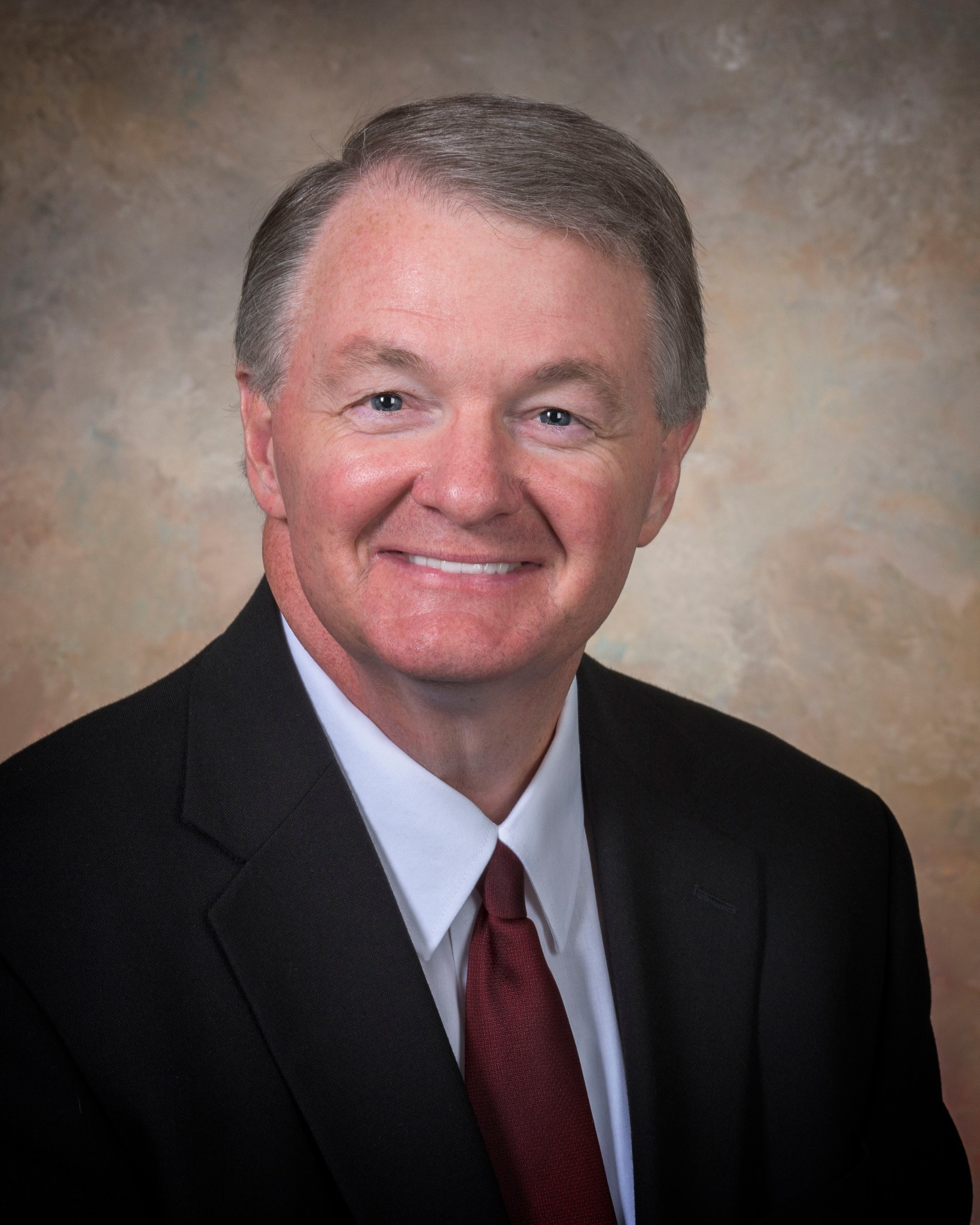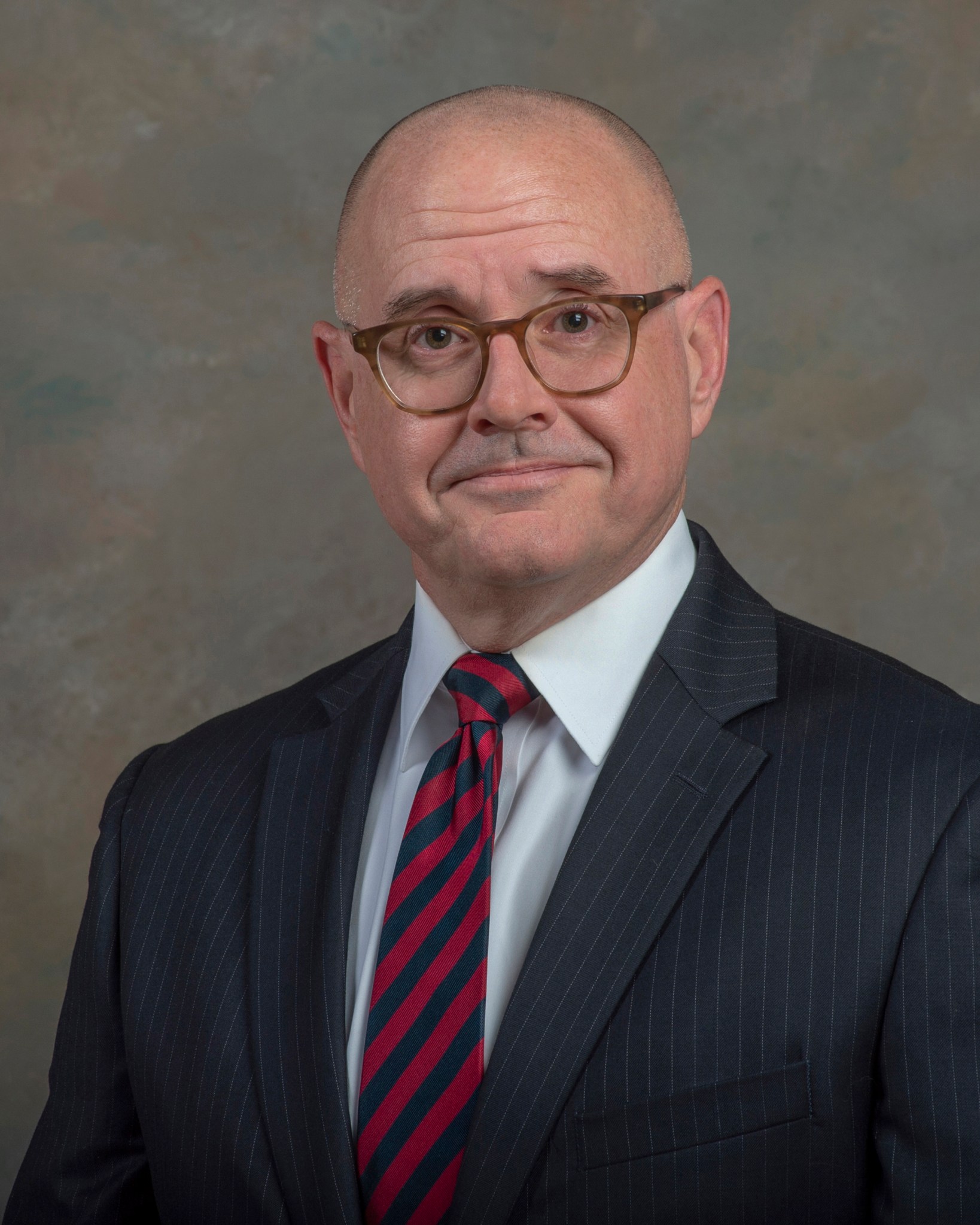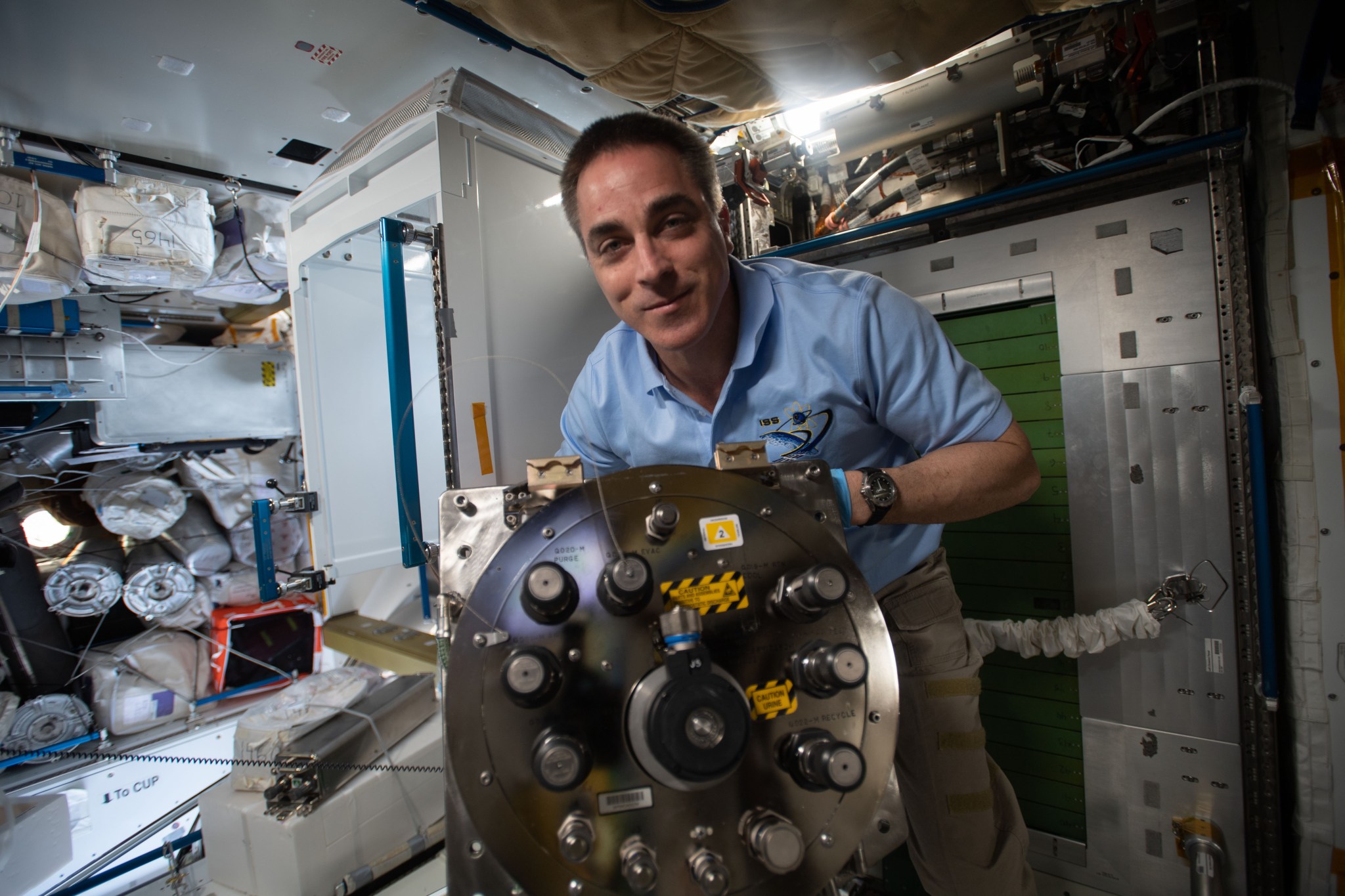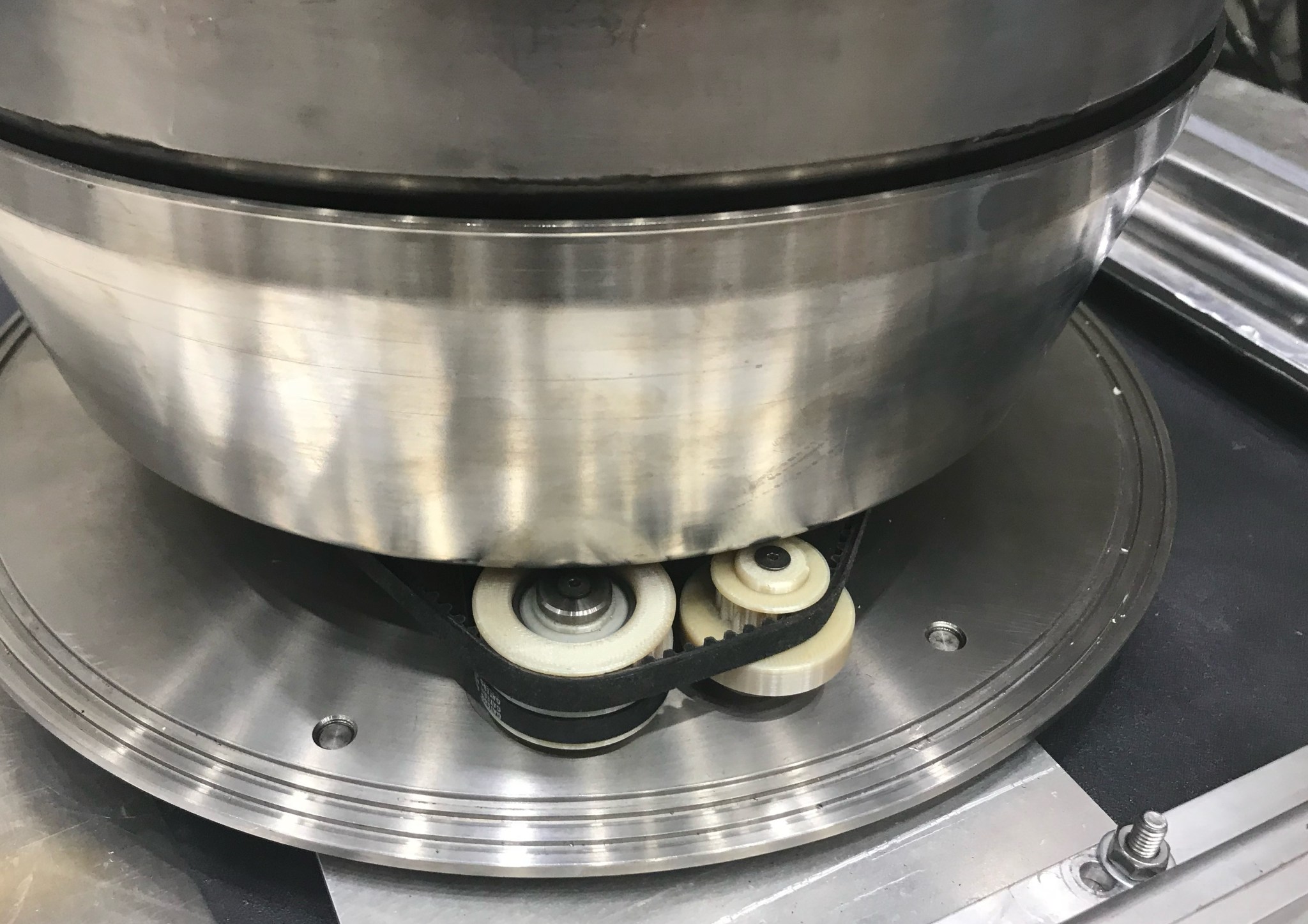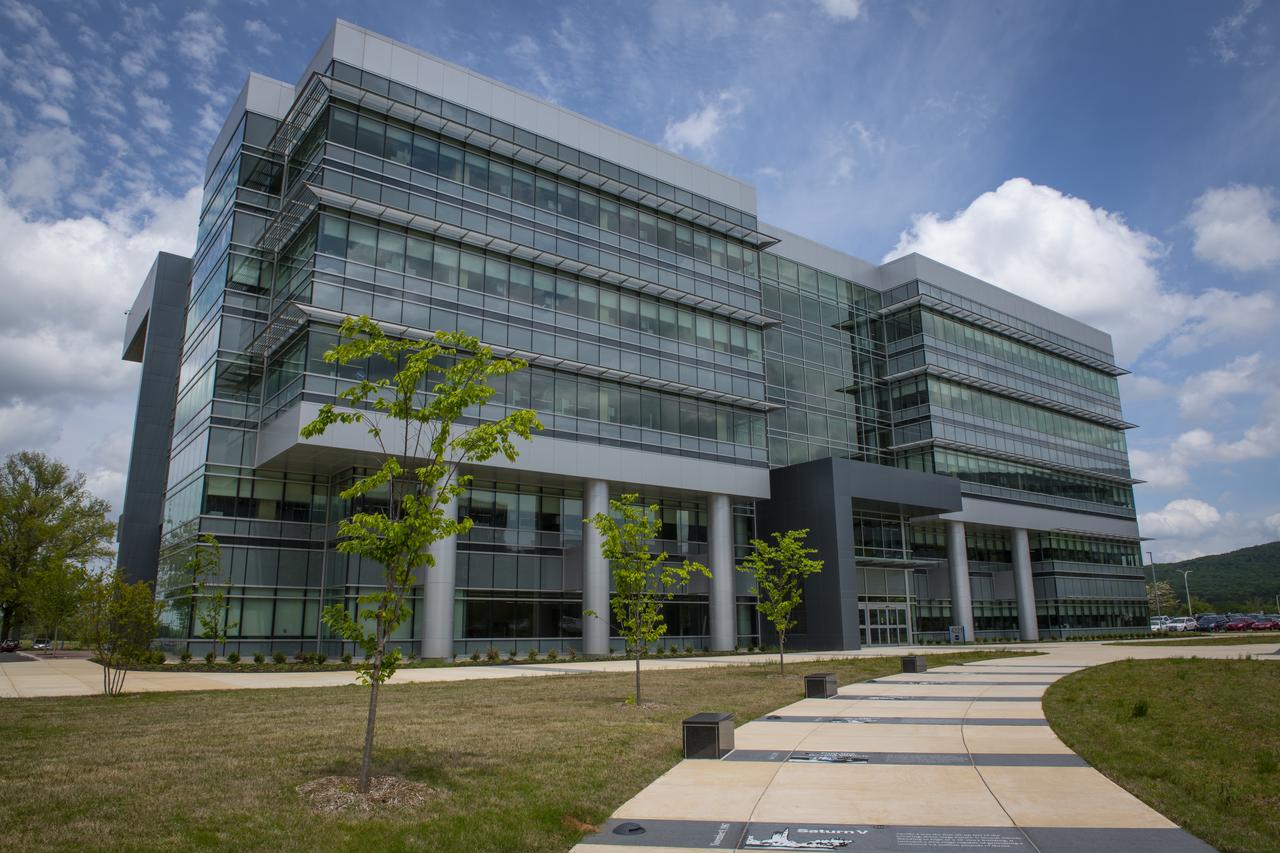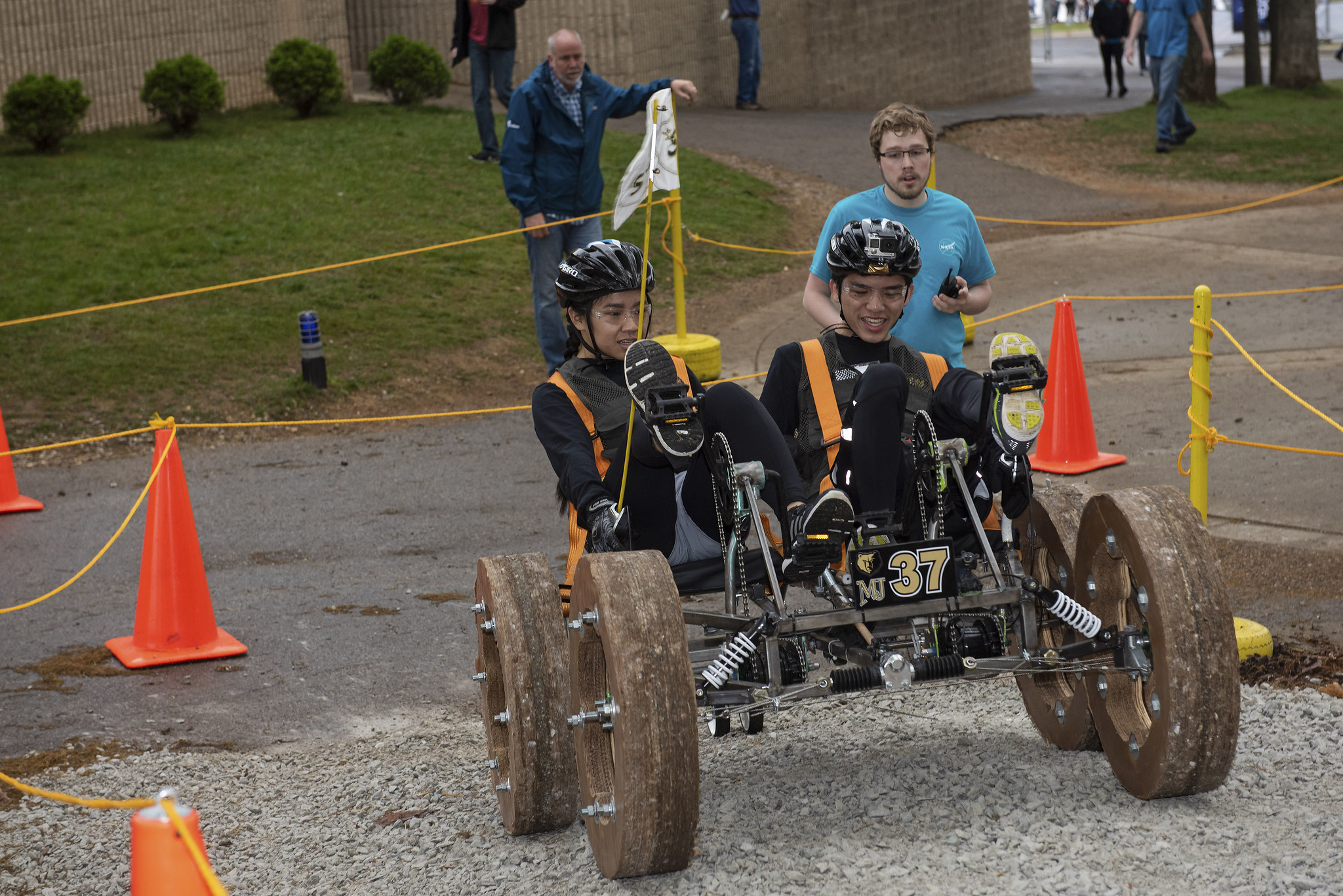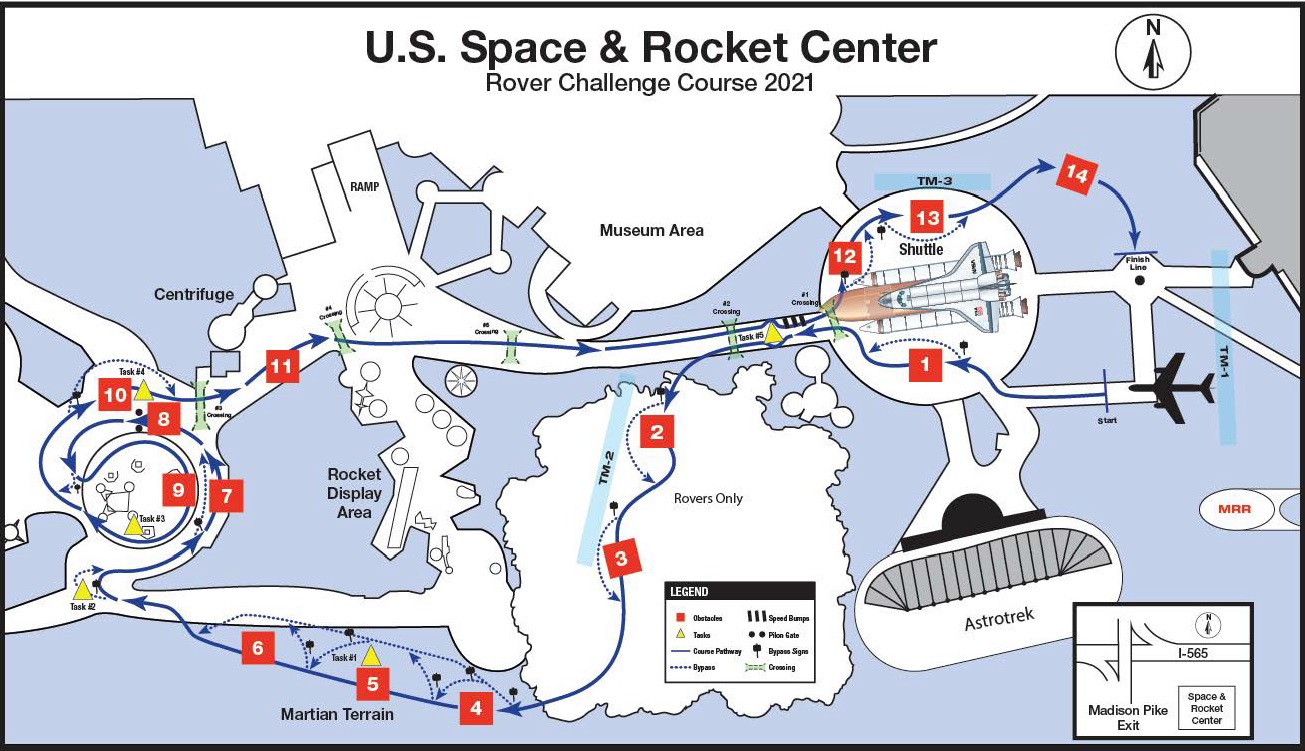In This Week’s Star
- Johnny Heflin Named Manager for SLS Engines Office
- Kent Chojnacki Named HLS Systems Engineering and Integration Office Manager
- Marshall Propulsion Engineer Nick Case Receives Silver Snoopy Award
- Marshall Engineers Refine Hardware, Apply Innovative Solutions to More Reliably Recycle Space Station Wastewater
- NASA to Host Webinars for National Cybersecurity Awareness Month
- Human Landing System Program Manager Lisa Watson-Morgan to Deliver Mission Success is in Our Hands Lecture
- Marshall Civil Servants: Make an Impact by Participating in the Employee Viewpoint Survey
- Registration Open for NASA’s Human Exploration Rover Challenge
- This Week in NASA History: STS-41G Lands – Oct. 13, 1984
Johnny Heflin Named Manager for SLS Engines Office
Johnny Heflin has been appointed to the Senior Executive Service position of manager of the Engines Office for NASA’s Space Launch System Program at NASA’s Marshall Space Flight Center. He will oversee, direct, and manage three contracts for the SLS engines, an annual budget of $500 million, and a workforce of more than 1,000 civil servants and government contractors across the country.
The Senior Executive Service is the personnel system that covers most of the top managerial, supervisory, and policy positions in the executive branch of the federal government
Heflin had been acting manager of the SLS Engines Office since March 2020 and its deputy manager since 2014. He joined the SLS Program Office in 2011 as RS-25 engine manager, responsible for all operational aspects of the RS-25 liquid rocket engine. From 2011 to 2018, he was the SLS booster element lead systems engineer, overseeing the development of system requirements and verification.
He was the hardware management and operations manager of the Space Shuttle Main Engine Office from 2007 to 2011. He was responsible for the design, manufacturing, testing, and flight operations of all the space shuttle main flight engine hardware. Heflin previously was the space shuttle main engine avionics manager. He joined Marshall in 1990 as an engineer in the Propulsion Test Division.
A native of Decatur, Heflin holds a bachelor’s degree in electrical engineering from the University of Alabama in Huntsville. He has received numerous awards and honors, including a NASA Exceptional Achievement Medal, Outstanding Leadership Medal, Space Flight Awareness Award, and Silver Snoopy Award.
Heflin and his wife, Beth, have four children and reside in Huntsville.
Kent Chojnacki Named HLS Systems Engineering and Integration Office Manager
Kent Chojnacki has been appointed to the Senior Executive Service position of manager of the Systems Engineering and Integration Office – part of the Human Landing System Program Office at NASA’s Marshall Space Flight Center.
The Senior Executive Service is the personnel system that covers most of the top managerial, supervisory, and policy positions in the executive branch of the federal government.
Chojnacki will have authority for all activities associated with the programmatic, fiscal, and technical planning, procurement, design, development, testing, evaluation, production, and operation of the human landing element – including support equipment and facilities.
Chojnacki has more than 25 years of experience in the design and development of advanced space transportation vehicles. He joined Marshall in 2000 as an aerospace engineer in the Vehicle Systems Development Department, performing systems engineering and integration on large development programs such as Gravity Probe B and X-34 and X-43C demonstrator vehicles. From 2007 to 2011, he was the main propulsion system subsystem manager, integrated product team lead, and stage definition manager of the Ares upper stage project.
From 2011 to his present assignment, Chojnacki worked multiple positions for the Space Launch System Program – including deputy chief engineer for the stages element, lead of the stages exploration upper stage, and associate manager of the SLS Stages Office. During this time frame, he also served as payload manager of the cryogenic propellant storage and transfer project.
Prior to his NASA career, Chojnacki worked in private industry, leading the design, development, and fabrication of cryogenic valves for rockets.
Chojnacki received a bachelor’s degree in aeronautics and astronautics from the Massachusetts Institute of Technology in Cambridge and both a master’s and doctorate in mechanical engineering from the University of Alabama in Huntsville. He is the recipient of numerous awards, including a NASA Silver Achievement Medal and a NASA Exceptional Service Medal.
He and his wife, Lara Isbell, live in Huntsville with their four children.
Marshall Propulsion Engineer Nick Case Receives Silver Snoopy Award
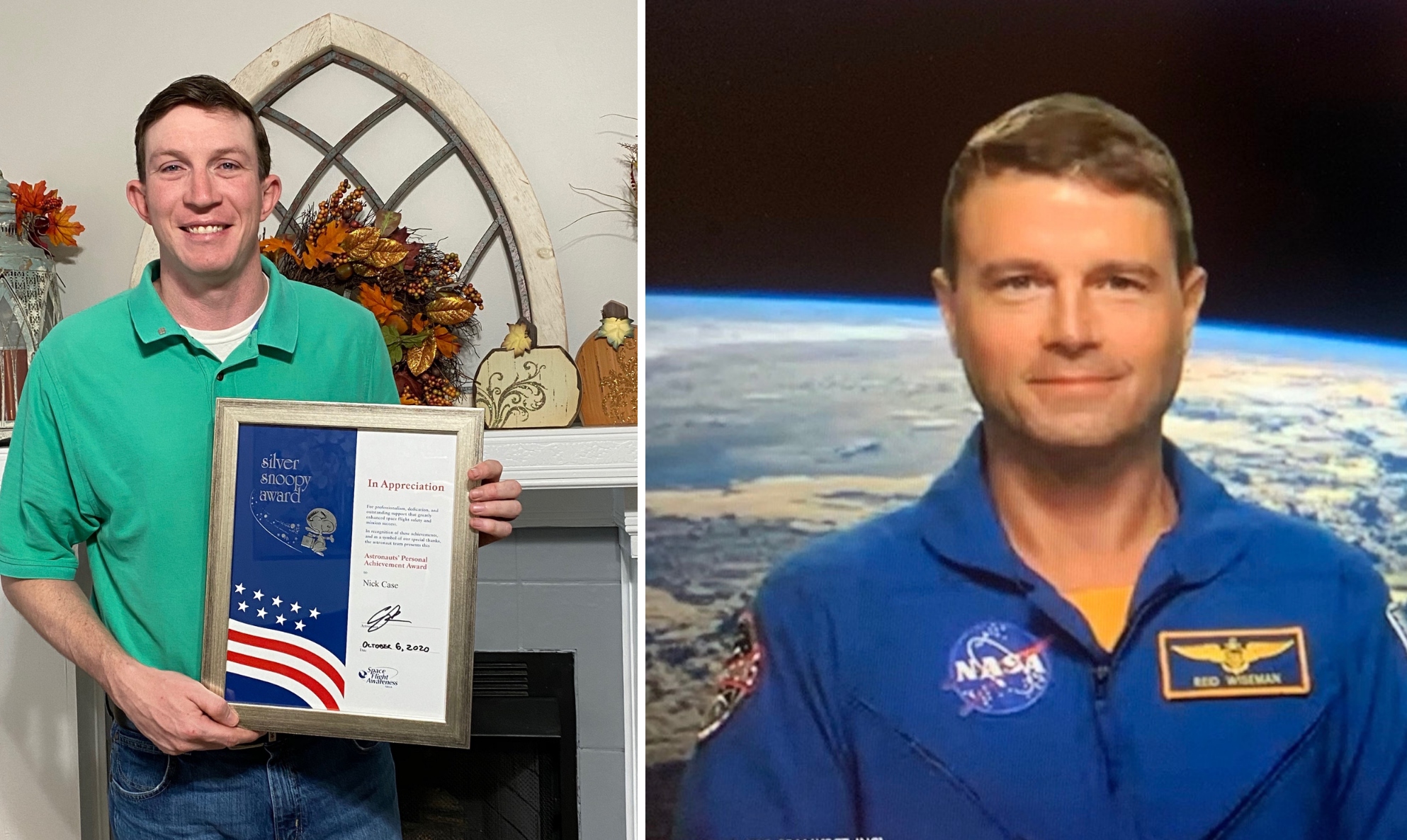
Nick Case, left, chief of the Propulsion Test Branch at NASA’s Marshall Space Flight Center, displays the prestigious Silver Snoopy award he received during a virtual ceremony Oct. 3. Case was presented the award by NASA astronaut Reid Wiseman, right, who nominated Case for his tireless work in investigating two Russian launch mishaps: the uncrewed Progress 65P launch, which failed to achieve orbit in 2016; and the Soyuz 56S ascent abort anomaly in 2018, in which a faulty sensor caused the Russian and American crew to abort liftoff and safely perform an emergency landing. Wiseman credited Case’s “expertise, leadership, communication style, and inventiveness in finding data in obscure places around the globe” for resolving the investigations and helping to safeguard future missions against similar issues, he wrote. “When we strap into the Soyuz for the ride to low-Earth orbit, we do so knowing there are people like you working behind the scenes to make our journey as safe as possible.” The Silver Snoopy award is presented by the NASA astronaut corps to civil service and contractor employees who have made direct, significant contributions to America’s human spaceflight program. Case, who joined NASA in 2006, has spent his entire career designing, building, and testing liquid rocket propulsion components and systems for the agency’s mission in space. Wiseman, who became an astronaut in 2011, was an International Space Station flight engineer during Expedition 41 in 2014. (NASA)
Marshall Engineers Refine Hardware, Apply Innovative Solutions to More Reliably Recycle Space Station Wastewater
By Rick Smith
Fine-tuning hardware technology to increase durability and minimize the need for replacements is a driving factor for Environmental Control and Life Support Systems engineers supporting air and water recycling on the International Space Station.
“As we travel farther from Earth on Artemis missions to the Moon and build toward longer, crewed missions to Mars, it’s inevitable we’ll need more reliable hardware and a reduced requirement for spares,” said Arthur Brown, deputy manager of ECLSS integration and development at NASA’s Marshall Space Flight Center. “Even from the space station, it’s a long way to the nearest hardware store or machine shop.”
Case in point: The newly upgraded distillation system for the space station’s urine processor assembly – flown to the station in March and installed in September – challenged Marshall’s ECLSS team to take a fresh look at an old problem, and apply a state-of-the-art solution.
“The distillation assembly is the heart of the Urine Processor Assembly,” Brown said. “It’s the core of the machinery that converts human urine into clean drinking water.”
Urine is boiled in the distillation assembly and delivered to the water processor, where it undergoes a cycle of filtration and chemical purification until it is usable by the crew – reducing costs associated with launching heavy water resupply shipments from Earth.
Developed for NASA in the 1990s and refined continuously ever since the space station began to house rotating crews 20 years ago, urine and wastewater recycling technologies used on the station typically do a better job cleaning, filtering, and delivering potable water than many large commercial systems employed on Earth.
But engineers found the station’s system suffered an issue common to many machines – deteriorating belts. Belt drives typically transmit motion from one internal hardware element to another, mechanically linking rotating parts to drive gears or wheels. They require tension, correct contact, and proper maintenance to function.
Even with the right upkeep, belts wear out – especially when exposed to the steam from the urine distillation assembly accelerating the process.
“Our challenge was to deliver a new design that could bypass the belt stretching issue,” Brown said. “The Urine Processor Assembly team partnered with engineers in Marshall’s Materials and Processes laboratory to explore 3D printing options to develop prototype design solutions and dramatically shorten design cycles.”
3D printing, also known as additive manufacturing, uses composite materials, built up layer by layer, to create sophisticated, durable parts and hardware. NASA is pursuing the technology to provide long-term space missions with their own 3D print-on-demand “machine shops,” enabling future exploration crews to build reliable parts and tools without waiting for weeks or months for shipments from Earth.
Marshall engineering teams determined they could 3D-print a plastic-toothed drive pulley, and they delivered near-flight-quality prototypes in less than two weeks. From there, they expanded the system upgrades to include a variety of internal part redesigns, all to better mitigate the impact of the hardware’s steam and fluid environment, extend its service life, and continue to reliably provide the crew with life-sustaining potable water.
Previously, the distillation assembly might experience parts failures after approximately 1,400 hours of service. With the latest upgrades, engineers anticipate a service life of more than 4,300 hours without parts replacement. The distillation assembly, which helps the crew recycle 90% of the water they need on station, is only operated for a few hours each day, so those anticipated lifetime hours can stretch into years.
“Our first goal is always to increase reliability. If hardware doesn’t break, that’s a problem solved,” Brown said. “But we’re also working to enable on-orbit maintenance by replacing component parts – from sensors to vacuum pumps – instead of taking out whole mechanisms and flying up brand new ones. In future systems, everything internal is designed to be individually replaceable by the crew.”
Building on two decades of experience and technical know-how gained at the space station, NASA’s Artemis program will land the first woman and next man on the Moon by 2024 and prepare to extend humanity’s reach farther into the solar system.
Smith, a Manufacturing Technical Solutions employee, supports Marshall’s Office of Strategic Analysis & Communications.
NASA to Host Webinars for National Cybersecurity Awareness Month
By Taylor Goodwin
In recognition of National Cybersecurity Awareness month, NASA encourages all team members to engage in upcoming webinars designed to increase cyber awareness.
“As most of us work from home in response to COVID-19, we must be mindful that our government devices are still connected to NASA’s network via the Virtual Private Network,” said Walter Franklin, chief information security officer at NASA’s Marshall Space Flight Center. “We need to be just as vigilant in our practices as we are on-site. The bad guys and girls know that we’re working from home, and they’re trying to exploit the work-from-home mindset.”
Marshall and NASA’s Stennis Space Center kicked off the virtual events Oct. 13, with a counterintelligence talk led by Stennis lead chief investigator special agent David Malcom. Marshall chief investigator agents Ron Smith and Guy Hardman will also participate in the meeting.
NASA will continue this series of talks with live streams featuring the following topics:
- The FBI’s investigation into advanced persistent threat groups and evolving challenges for the chief information security officer, Oct. 20 at noon.
- Counterintelligence, protecting against threats, and the new Controlled Unclassified Information program, Oct. 21 at noon.
- Phishing – how cyber criminals use emails to breach networks and steal data, Oct. 22 at 1 p.m.
- Big data security, Oct. 28 at noon.
A full schedule of events is available on Marshall’s IT and Cybersecurity site. Users must register for each day separately. To do so, log into SATERN and search for “NASA Cyber” in the catalog. Select “NASA Cyber Security Events” and “see offerings.”
“Vigilance and reporting are the key to success in cybersecurity,” Hardman said. “Extended telework has seen a dramatic increase in foreign targeting of government employees in a variety of ways. We rely on the workforce to take cyber awareness training seriously and implement it in every facet of their personal and professional lives.”
Marshall’s information technology and cybersecurity teams remind team members to be mindful of phishing campaigns, not to connect or allow others to connect government devices to personal devices, and to ensure that computers are fully patched – meaning that users do not block or otherwise prevent patches from deploying.
“Please do your part to ensure that we’re able to return to the Moon by remaining cyber aware,” Franklin said. “Regardless of your job duties, we are all working toward the same goal.”
For registration questions, contact ITSATC@lists.nasa.gov.
Goodwin, a Media Fusion employee, supports Marshall’s Office of Strategic Analysis & Communications.
Human Landing System Program Manager Lisa Watson-Morgan to Deliver Mission Success is in Our Hands Lecture
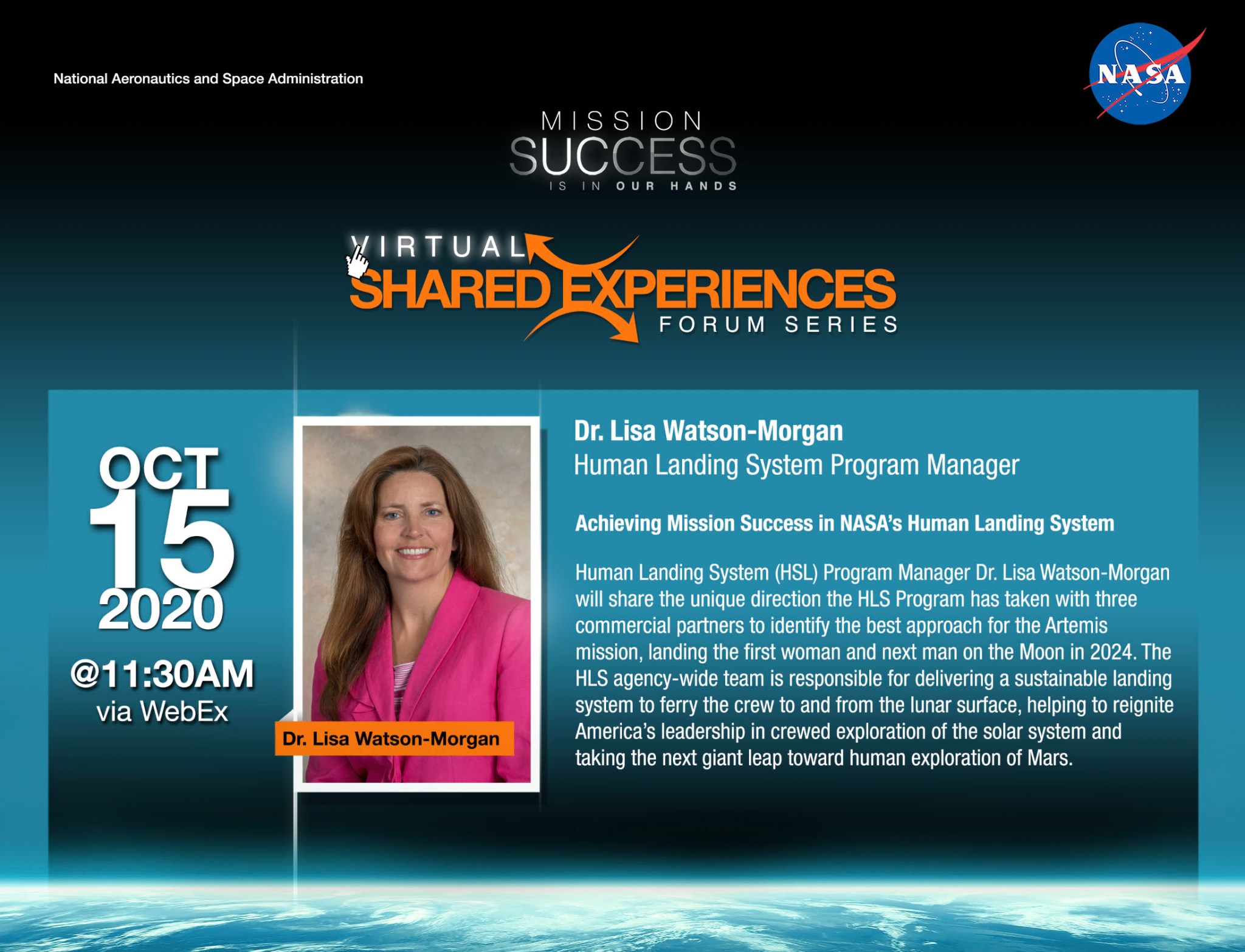
Lisa Watson-Morgan, manager for NASA’s Human Landing System Program at NASA’s Marshall Space Flight Center, will deliver a virtual Mission Success is in Our Hands lecture via Webex at 11:30 a.m. Oct. 15. Watson-Morgan will share the unique direction the program has taken with three commercial partners to identify the best approach for the Artemis missions, which will land the first woman and next man on the Moon in 2024. The Mission Success Is in Our Hands initiative is a campaign led by Marshall’s Safety and Mission Assurance Directorate and partner Jacobs Engineering of Huntsville that promotes and strengthens Marshall’s focus on mission, hardware, and crew safety. (NASA)
Marshall Civil Servants: Make an Impact by Participating in the Employee Viewpoint Survey
By Adam Farragut
Civil servant team members at NASA’s Marshall Space Flight Center are urged to take the 2020 Federal Employee Viewpoint Survey before it closes at 11:59 p.m. on Nov. 4.
Supervised by the Office of Personnel Management, the survey is designed so full-time and part-time civil servants can share their perception of the agency, their work experiences, and their leadership in order for managers to assess where improvements can be made.
“This year has brought an unprecedented set of challenges that have made us stronger, and I could not be more proud of the team,” Marshall Director Jody Singer said. “By sharing your experiences and feedback, Marshall can continue to deliver on its mission while remaining one of the best places to work.”
The survey, which started in 2010, has been adapted to address the COVID-19 pandemic while reducing the total number of questions to help limit the time needed to complete the survey. OPM plans to provide initial survey data in December, with more comprehensive results to be released in January.
“Each year, OPM relies on the workforce to provide open and honest feedback in order to assess where we are as a center and an agency,” said Larry Mack, deputy director of Marshall’s Office of Human Resources.”Team member survey participiation is an invaluable tool in making sure Marshall continues being the best workplace it can be.”
The email-based survey is voluntary and takes approximately 20-25 minutes to complete. All responses are confidential. All permanent civil servants hired before Oct. 1, 2019, should have received an individual invitation from OPM on Sept. 24. Eligible civil service employees who have not yet received an email invitation should contact OPM at EVNN@opm.gov.
NASA has added the ability for term employees to participate through the NASA Shared Service Center. Elligible term employees who were employed by NASA as of Oct. 1 will receive an invitation email and survey link directly from the NSSC.
Farragut, a Manufacturing Technical Solutions employee, supports Marshall’s Office of Strategic Analysis & Communications.
Registration Open for NASA’s Human Exploration Rover Challenge
By Will Bryan
A new school year is underway, which means it is time for a new year of NASA’s Human Exploration Rover Challenge. Registration has opened for U.S.-based student teams to participate in the annual competition, set for April 15-17, 2021, at the U.S. Space & Rocket Center.
International teams had to submit proposals to become eligible, and selected teams will be notified Nov. 6.
The 27th edition of the event, managed by the Office of STEM Engagement at NASA’s Marshall Space Flight Center, features high school, college, and university students – known as the Artemis Generation – designing, engineering, and testing a human-powered rover to take on a course simulating terrain found on the Moon, Mars, and other rocky bodies in the solar system.
Rover Challenge reflects the goals of NASA’s Artemis program, which seeks to put the first woman and next man on the Moon by 2024. Teams of one female and one male driver or two female drivers will pilot each student team’s lightweight rover across the grueling half-mile course featuring obstacles and scientific challenges.
The competition’s primary mission is to challenge teams to think like NASA mission planners and planetary explorers. The students will have to select which of the five science tasks and 14 obstacles to attempt in order to score maximum points and complete their course run within the eight-minute time limit. The time limit represents a virtual supply of oxygen and emphasizes the importance of planning the mission to maximize return while balancing available resources.
Introduced for the 2020 challenge – which had its excursion days canceled due to the coronavirus pandemic – are the ice geyser slalom obstacle and the core sample retrieval task.
Another unique aspect of the competition is the requirement that teams design and fabricate their own wheels, except for the central hubs, which can be commercially purchased. Previous competitions featured precision-cut cardboard wheels, welded metal wheels, and 3D-printed wheels.
In the event the ongoing coronavirus pandemic forces modifications to the competition – including changes to the currently planned in-person activities – competitors and audiences will be notified.
NASA’s Human Exploration Rover Challenge is one of seven Artemis Student Challenges NASA’s Office of STEM Engagement uses to further the agency’s goal of encouraging students to pursue degrees and careers in the science, technology, engineering, and mathematics fields.
For questions regarding U.S. and international team registration, please contact MSFC-RoverChallenge@mail.nasa.gov.
For more information about the 2021 Human Exploration Rover Challenge, visit here.
For more information about other NASA engineering challenges, visit here.
Bryan, a Manufacturing Technical Solutions employee, supports Marshall’s Office of Strategic Analysis & Communications.
This Week in NASA History: STS-41G Lands – Oct. 13, 1984
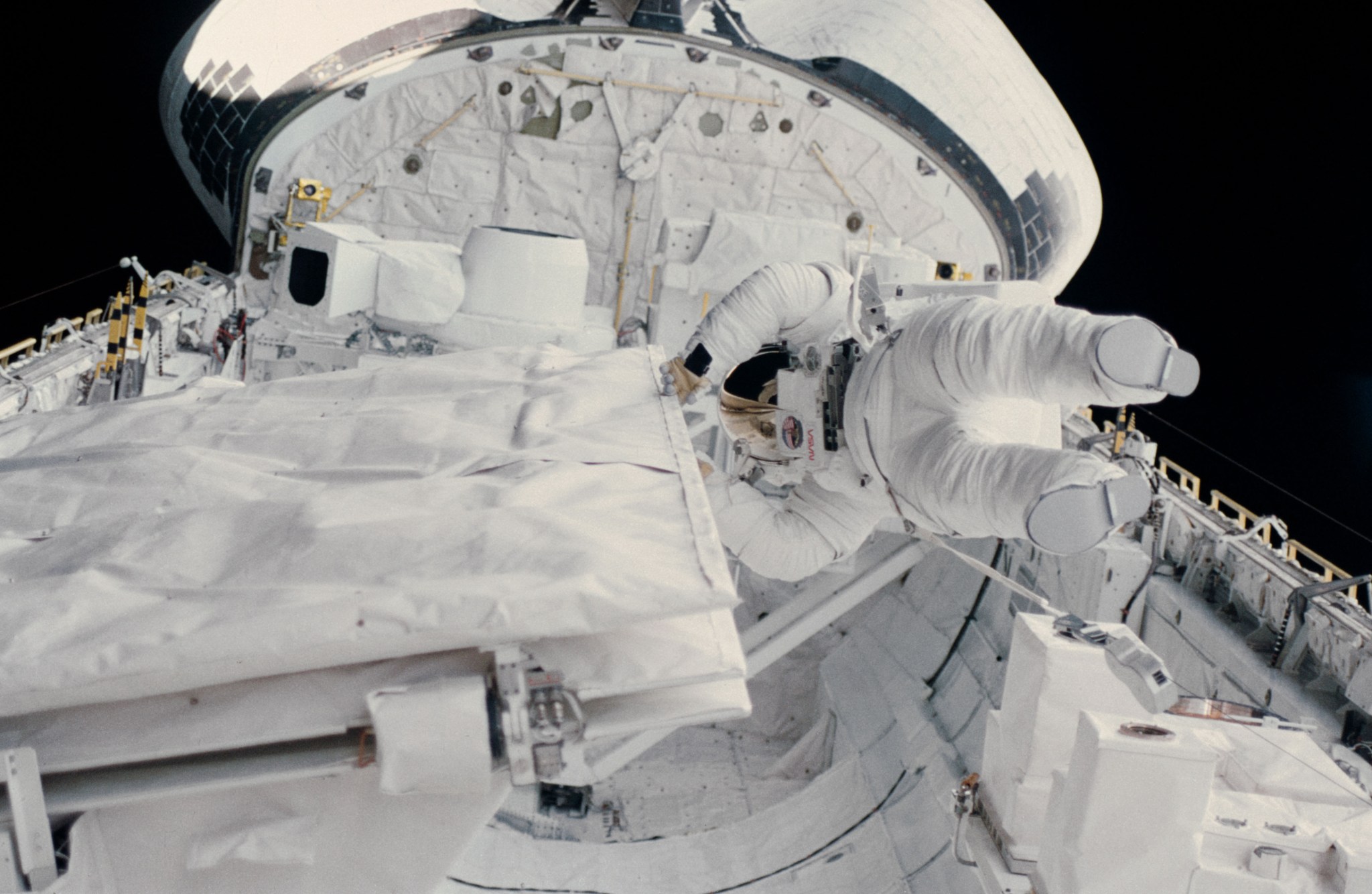
This week in 1984, space shuttle Challenger, mission STS-41G, landed at NASA’s Kennedy Space Center following a successful eight-day mission. The mission’s main objective was to deliver the Earth Radiation Satellite to orbit. Components of the Orbital Refueling System were connected, demonstrating it is possible to refuel satellites in orbit. STS-41G was the first flight to include two female astronauts, Sally Ride and Kathryn Sullivan. Here, Sullivan checks the latch of the Shuttle Imaging Radar-B antenna in the Challenger’s cargo bay as she became the first American woman to walk in space Oct. 11, 1984. The NASA History Program is responsible for generating, disseminating, and preserving NASA’s remarkable history and providing a comprehensive understanding of the institutional, cultural, social, political, economic, technological, and scientific aspects of NASA’s activities in aeronautics and space. For more pictures like this one and to connect to NASA’s history, visit the Marshall History Program’s webpage. (NASA)




























